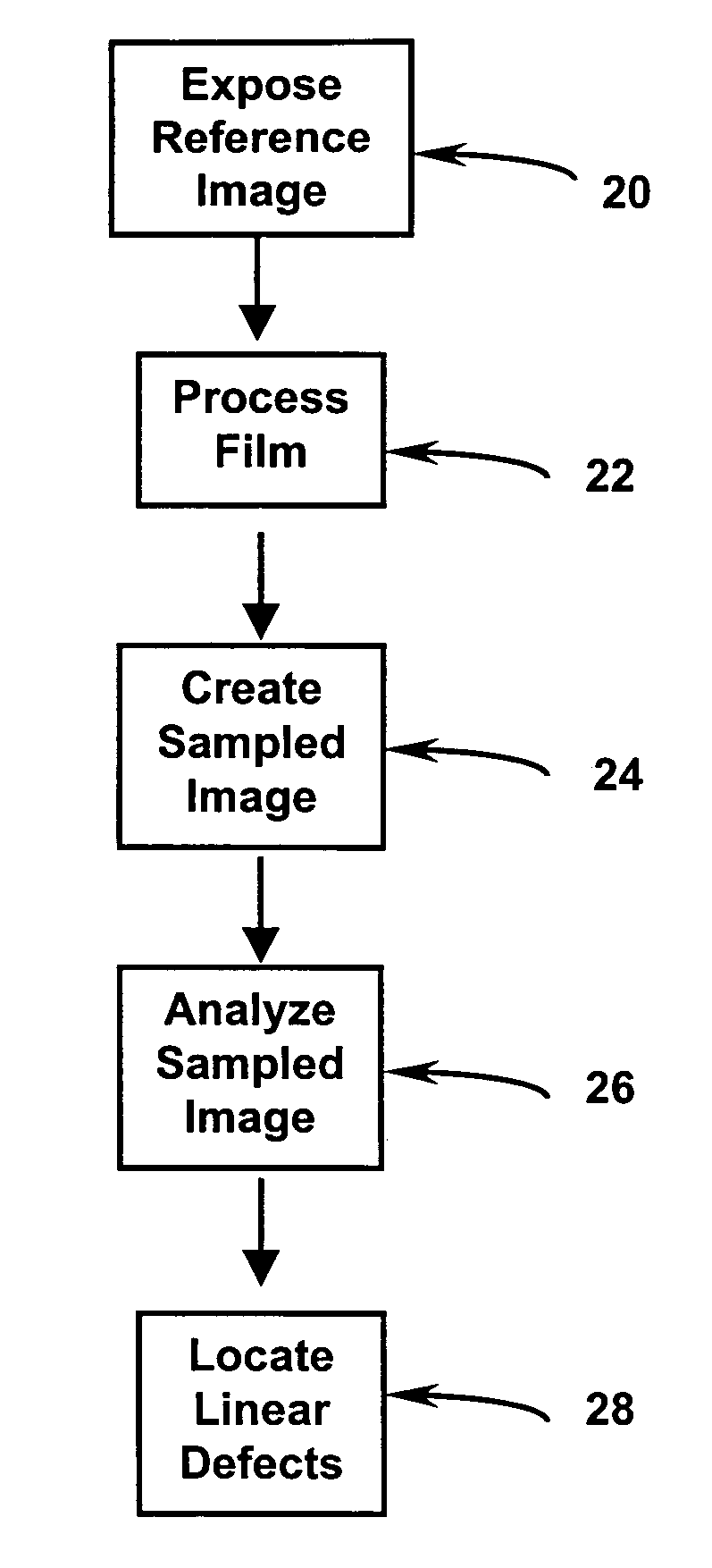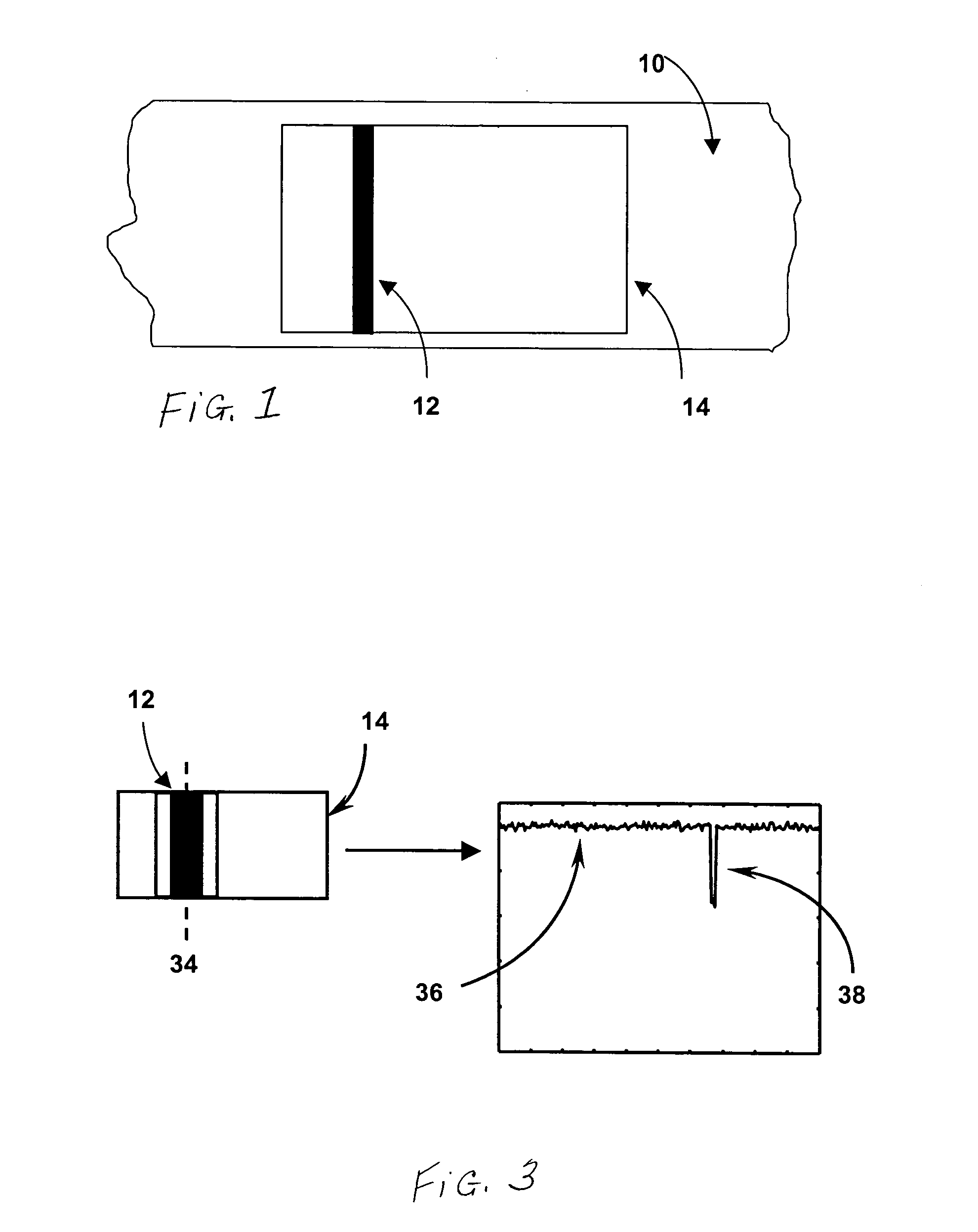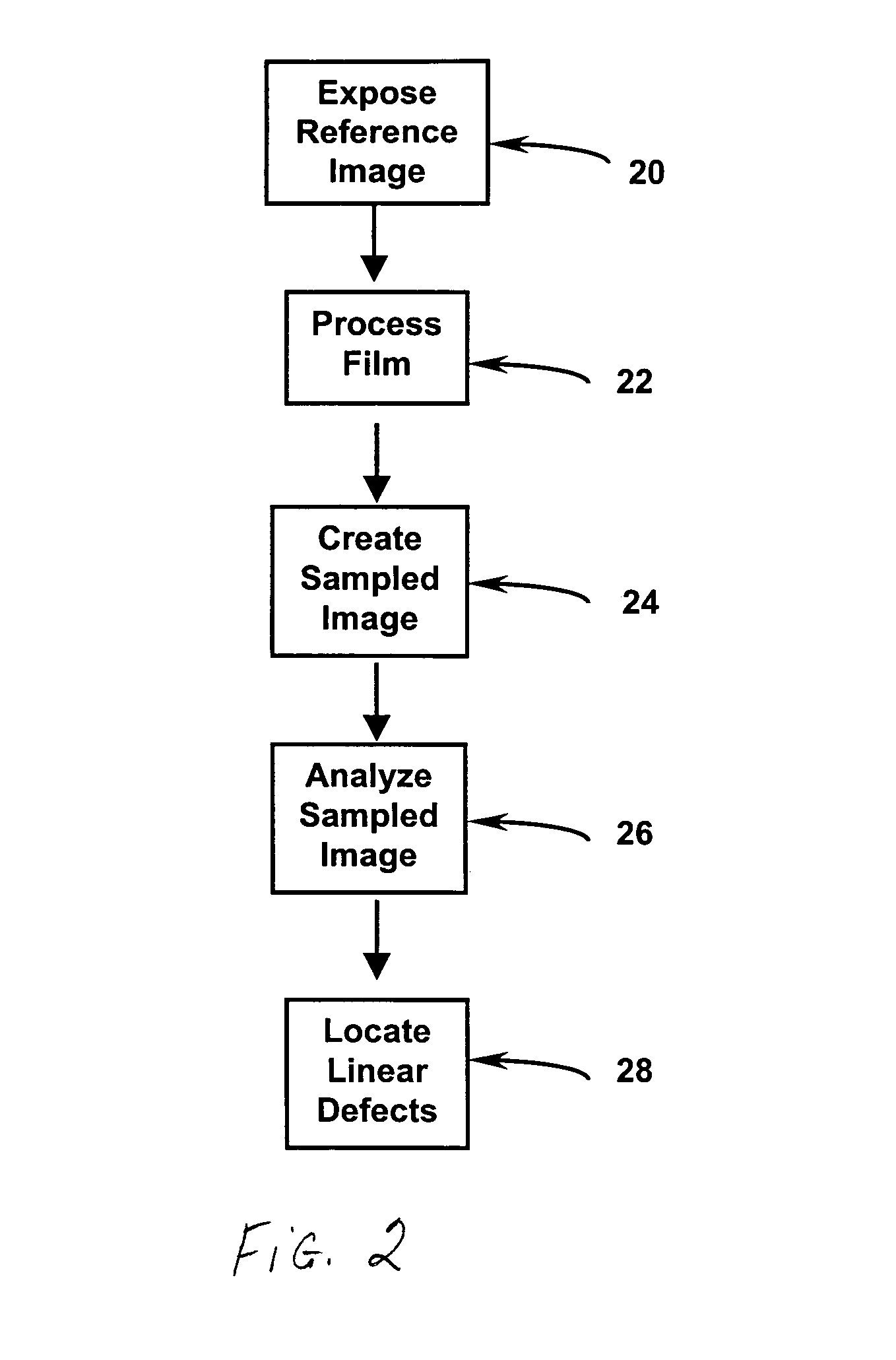Location of extended linear defects
a technology of extended linear defects and defect location, applied in the field of photography, can solve the problems of affecting the image quality of the image, the length of the photographic element, the length of the photographic element, and achieve the effect of wide imaging width
- Summary
- Abstract
- Description
- Claims
- Application Information
AI Technical Summary
Benefits of technology
Problems solved by technology
Method used
Image
Examples
Embodiment Construction
[0012]According to the present invention, a region spanning the width of a typical exposure region on a photographic element, for example the useful width of a film frame on a film strip, is exposed with a sufficiently uniform exposure.
[0013]A photographic element includes at least a base with a photosensitive layer that is sensitive to light to produce a developable latent image. The photosensitive layer may contain conventional silver halide chemistry, or other photosensitive materials such as thermal or pressure developable chemistries. It can have a transparent base, a reflective base, or a base with a magnetically sensitive coating. The photographic element can be processed through standard chemical processes, including but not limited to Kodak Processes C-41 and its variants, ECN-2, VNF-1, ECP-2 and its variants, D-96, D-97, E-4, E-6, K-14, R-3, and RA-2SM, or RA-4; Fuji Processes CN-16 and its variants, CR-6, CP-43FA, CP-47L, CP-48S, RP-305, RA-4RT; Agfa MSC 100 / 101 / 200 Film ...
PUM
 Login to View More
Login to View More Abstract
Description
Claims
Application Information
 Login to View More
Login to View More - R&D
- Intellectual Property
- Life Sciences
- Materials
- Tech Scout
- Unparalleled Data Quality
- Higher Quality Content
- 60% Fewer Hallucinations
Browse by: Latest US Patents, China's latest patents, Technical Efficacy Thesaurus, Application Domain, Technology Topic, Popular Technical Reports.
© 2025 PatSnap. All rights reserved.Legal|Privacy policy|Modern Slavery Act Transparency Statement|Sitemap|About US| Contact US: help@patsnap.com



